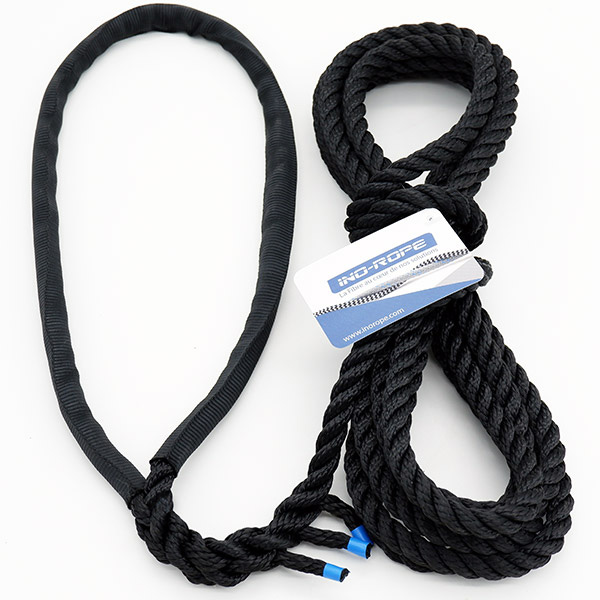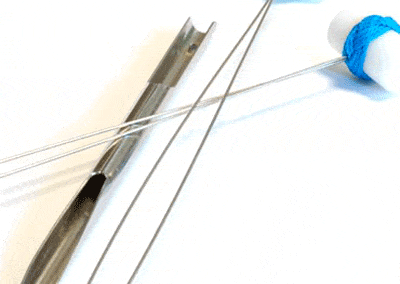
Purchase guide 2/4
Dock lines: how many and how long?
Regarding dock lines, there are definitely two schools! The first is where the smallest locker on board is overflowing with mooring lines of all kinds, from an old piece of Ø 32 dock line as rigid as a justice to the messy rope spool that would be more useful for larding roast beef. The second is where minimalism reigns as master (tyrant?) on board, mainly for weight saving reasons. The minimal requirement is:
- two or three lines (bow or stern lines) if the boat is docked alongside a catway (in this case there are two bow lines). These lines should be about one and a half times the length of your boat.
- two spring lines, a forward spring (or “descending”) in order not to move forwards and one aft spring line(or “ascending”) not to move backwards. The length of each spring line is equal to the length of your boat.

To moor alongside a dock, you need two bow lines and two stern lines, two spring lines and possibly a breast line.
But there are never too many extra or longer dock lines! It is better to be sufficiently equipped in order to handle all situations: docking alongside a jetty, a catway or using lazy lines , etc.) (see diagram below), beaching alongside a quay (see diagram below), tying onto a mooring buoy etc.
A short dock line is also very useful as a breast line (see diagram above) to maintain the boat close to the dock while you moor it properly.

If you are beaching alongside a dock, use very long lines to handle the tidal movement and tie them on cleats, far enough from the bow and stern of the boat (the tension of the lines varies less between high and low tide).

In Mediterranean ports, lazy lines are often used for mooring. You then need four stern lines that you cross over. Tighten the bow lazy line so that the boat does not touch the dock: tie the lazy line directly on a cleat or, if it has an eye splice, pass one of your dock lines through it to avoid getting your deck dirty.
Which diameter should you choose?
The question is which diameter you should choose. There is an obscure rule that may remind you of something: measure the length of your boat (in meters) and add four to that. The result, converted into millimetres, will give the diameter of the rope: 11 (boat length in metres) + 4 = 14 mm.
This calculation does not take into account the characteristics of the rope (materials, structure) and of the boat (weight, wind surface area). So don’t hesitate to examine the technical data sheet of each dock line to find out its resistance. The size of your cleats can also be a good indicator of the right rope diameter.

-
 Ready-to-use dockline – Polyester 3-strandsFrom: Original price was: 22,77 €.19,57 €Current price is: 19,57 €. TTC
Ready-to-use dockline – Polyester 3-strandsFrom: Original price was: 22,77 €.19,57 €Current price is: 19,57 €. TTC -
 ⌀ de 10 à 18 mm3-strand polyester dockline1,69 € – 4,99 € TTC
⌀ de 10 à 18 mm3-strand polyester dockline1,69 € – 4,99 € TTC -
 Ready-to-use dockline – Polyamide core and polyester coverFrom: 28,00 € TTC
Ready-to-use dockline – Polyamide core and polyester coverFrom: 28,00 € TTC -
 ⌀ de 12 à 18 mmDockline polyamide core and polyester cover3,71 € – 7,15 € TTC
⌀ de 12 à 18 mmDockline polyamide core and polyester cover3,71 € – 7,15 € TTC










